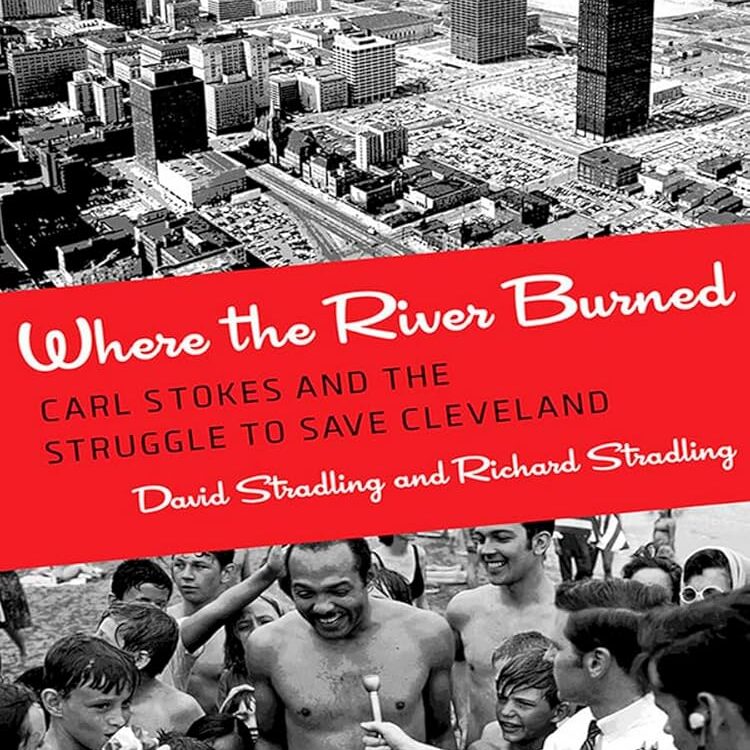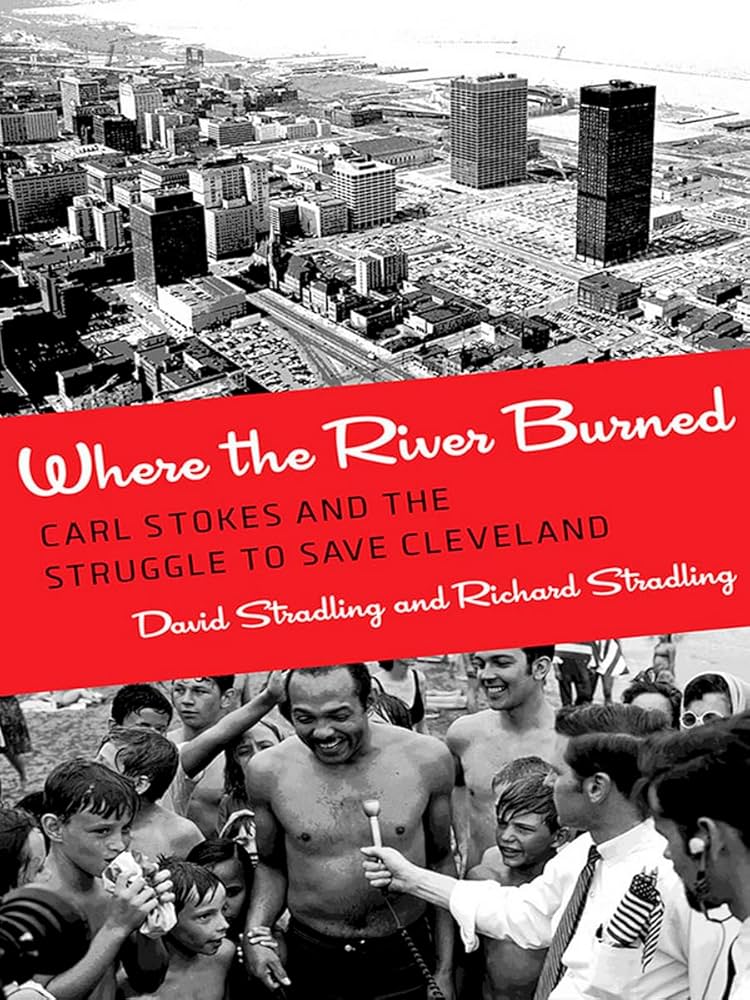Where the River Burned: Carl Stokes and the Struggle to Save Cleveland

In 1980, author and historian James Toman (and founder of our very own Cleveland Landmarks Press) wrote that “Clevelanders seem to suffer from a type of urban insecurity.” And no wonder. Clevelanders in the previous few decades had witnessed massive outmigration of its population to the suburbs, job losses in the tens of thousands, racial violence, and of course extreme environmental degradation centered in the industrial valley along the Cuyahoga River. And we all know what happened there in July 1969. Where the River Burned: Carl Stokes and the Struggle to Save Cleveland details the seemingly intractable challenges that coalesced in Cleveland during the 1960s and 1970s.
As Mayor Carl Stokes prepared to leave office in 1971, his administration admitted that although they took pride in communicating with residents and responding as best as they could, they had only made starts in addressing poverty, housing quality, pollution, infrastructure improvements, and a litany of other areas. And he felt alone, especially when it came to fighting for environmental justice: “You can’t look to the people in the suburbs, because that is why they are out there. You cannot look to the state, because the legislature is controlled by a suburban-rural coalition.” The answer? Only the federal government could force municipalities to create regional solutions to extremely difficult issues.
After he left office, he could at least point to one major legislative victory as a result of his advocacy: the passage of the federal Clean Water Act in 1972, which would eventually be an essential first step in urban sustainability efforts. Authors David and Richard Stradling set the context for the Stokes administration by detailing the physical deterioration of the neighborhoods and the ways in which Stokes, the first Black mayor of a major U.S. city, tried to address massive rat infestations, absentee landlords unwilling to improve the housing stock, and the failures of Cleveland’s urban renewal projects – all major issues that set the context for the environmental disaster that the burning river highlighted.
What was staggering about pollution policy back then? In 1968 the State of Ohio issued 1,371 permits for companies to pollute Ohio rivers, so the City of Cleveland couldn’t even prevent it. And yet Clevelanders experienced the pollution firsthand every day and the City had to figure out ways to address it. Even if the City of Cleveland could stop companies within its boundaries from releasing toxins into the river, other municipalities like Cuyahoga Heights, home to the Harshaw Chemical Company, could dump its wastes into the Cuyahoga River without sanction, allowing those wastes to flow down river into Cleveland and eventually Lake Erie. We have come a long way since those days.
The book highlights the many and mostly futile efforts to create regional solutions to all sorts of issues, including transportation and highway construction, waste management, and sewage. Needless to say, most municipalities pushed back on these efforts, despite Stokes’ urging to think of the urban area and its dozens of municipalities as inexorably connected. Today we still struggle with many of these same issues.
The book also unearths the work of area environmental activists largely unknown or forgotten to history, such as David Blaushild. A Shaker Heights Chevrolet dealer, Blaushild took out ads about environmental protection, sued the Ralph Locher administration in 1965 for not taking action against the city’s biggest polluters, and worked to keep Shaker Lakes clean. There was Betty Klaric, a Plain Dealer reporter who began a news series in 1965 titled “Save Lake Erie Now” and revealed on a regular basis to a wider audience just how dire the water pollution in town really was.
Ultimately Carl Stokes came to be recognized as one of the founders of the country’s environmental justice movement. And yet Stokes expressed concern that other people’s calls for environmental protection for Cleveland residents would ultimately be too narrow and not adequately address the many quality of life and civil rights issues that plagued the residents of Cleveland, and especially the Black population in Cleveland.
The book is essential reading for anyone interested in how our politics and municipal governance issues have emerged in the last 50 years or so. The authors suggest that given the range of challenges the region has experienced, perhaps our understanding of poverty, environmental protections, infrastructure improvements, and workforce development might best be considered through a regional lens. The authors do an expert job of exploring our history to help raise questions about governance today and shed light on choices we might consider moving forward if we are committed to providing a shared prosperity for all.
